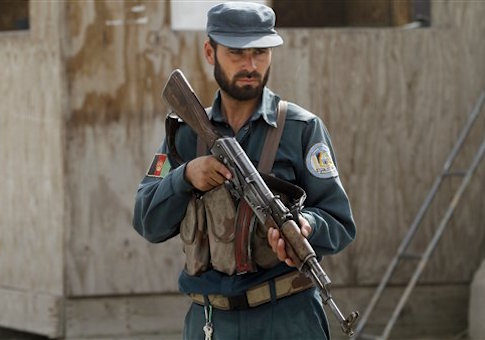Terrorists in Afghanistan control more territory than at any time since 2001 as America’s grip on the country continues to unravel amid a spike in violence that has made Afghanistan more dangerous than ever, according to a new government oversight report.
The Afghan government has lost control of about 30 percent of the country, with terrorists linked to the Taliban, ISIS, and other groups moving freely in the region, according to new findings by the Special Inspector General For Afghanistan Reconstructions, otherwise known as SIGAR.
"The lack of security has made it almost impossible for many U.S. and even some Afghan officials" to manage and oversee ongoing reconstruction projects that could total billions of dollars, according to the report, which found that the Afghan government has control of more than 70 percent of the country.
The deteriorating security situation has endangered oversight operations meant to ensure that billions of U.S. taxpayer dollars are being appropriately spent. American military casualties also have risen as terrorists gain a renewed foothold in the country, according to the report.
"The security situation leaves billions and billions of dollars’ worth of U.S.-funded projects and programs out of the reach of any American officials," said an oversight official not authorized to speak on the record.
"Afghanistan proved even more dangerous than it was a year ago," according to the report. "The Taliban now controls more territory than at any time since 2001. Vicious and repeated attacks in Kabul this quarter shook confidence in the national-unity government."
About a year after U.S. coalition forces turned security operations over to Afghan forces, the situation continues to worsen, particularly due to the Afghan forces inability to properly conduct operations.
There were nearly 72 "security incidents" per day in Afghanistan between August and December 2015, according to statistics compiled by SIGAR.
While the United States has provided more than $64.5 billion in taxpayer funds to rebuild the Afghan National Defense and Security Forces, they continue to falter. Since May 2015, the total force strength, which currently stands at 322,638, has decreased by nearly 10,000.
Afghanistan’s Ministry of Defense is expected to function at about 62 percent of its total ability, "a drop from the 69 percent, 74 percent, and 90 percent forecasts in the last three-quarters," the report found.
Additionally, the United Nations determined that "the overall level of security incidents increased and intensified from August 2015 through the end of October, with 6,601 incidents as compared to 5,516 incidents (a 19 percent increase) during the same period in 2014," according to the report.
"The 6,601 security incidents reported were the most since SIGAR began reporting in November 2012, and the average daily number of incidents that occurred equaled the number in the summer of 2014," according to the statistics.
Armed clashes and incidents involving improvised explosive devices increased by more than 20 percent since the same time period in 2014 and account for around 68 percent of all "security incidents," according to the U.N.
Scores of suicide attacks, assassination attempts, abductions, and other attacks also were recorded.
Between August and Oct. 31, 2015, officials documented "3,693 civilian casualties (1,138 persons killed and 2,555 injured)," which amount to "a 26 percent increase over the same period in 2014," according to the report.
Since January 2015, 11 U.S. military personnel have been killed in action, bringing the total to 21 deaths in this period.
Oversight projects also have suffered as a result of the increased violence, according to SIGAR, which has had difficulty keeping tabs on Afghanistan’s government.
"The dangers of absent oversight were exposed when a task force appointed by [Afghan] President Ashraf Ghani reportedly found that millions of dollars were being embezzled while Afghanistan pays for numerous nonexistent ‘ghost’ schools, ‘ghost’ teachers, and ‘ghost’ students," the report found.
Meanwhile, SIGAR continues to expose massive corruption and waste in U.S.-funded projects.
One U.S. Army sergeant, for instance, pled guilty last year in a conspiracy to receive "illegal bribes by a public official," according to the audit. This resulted in a 24-month sentence.
Another U.S. Army sergeant pled guilty to similar charges and was sentenced to a year in prison.
